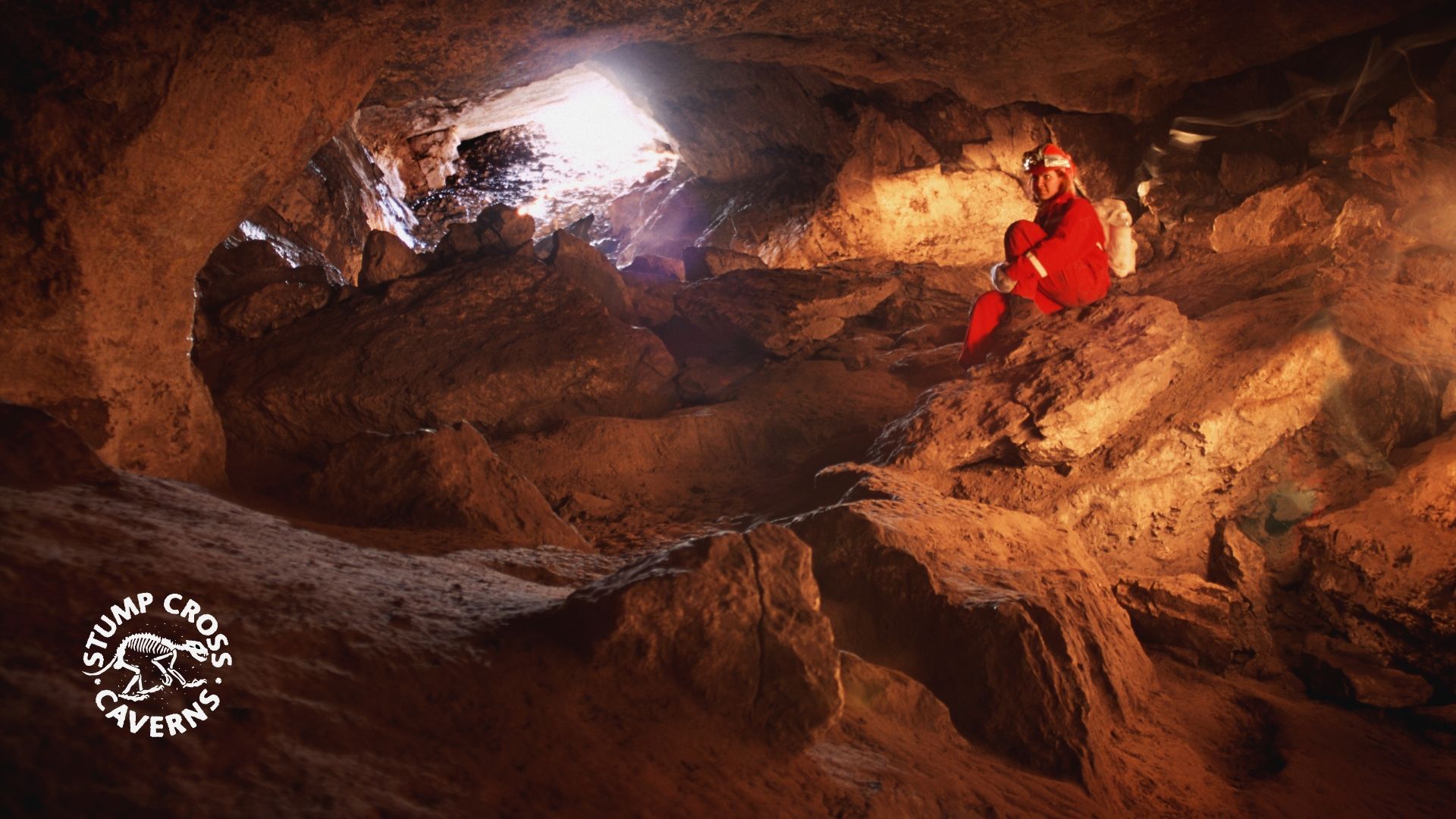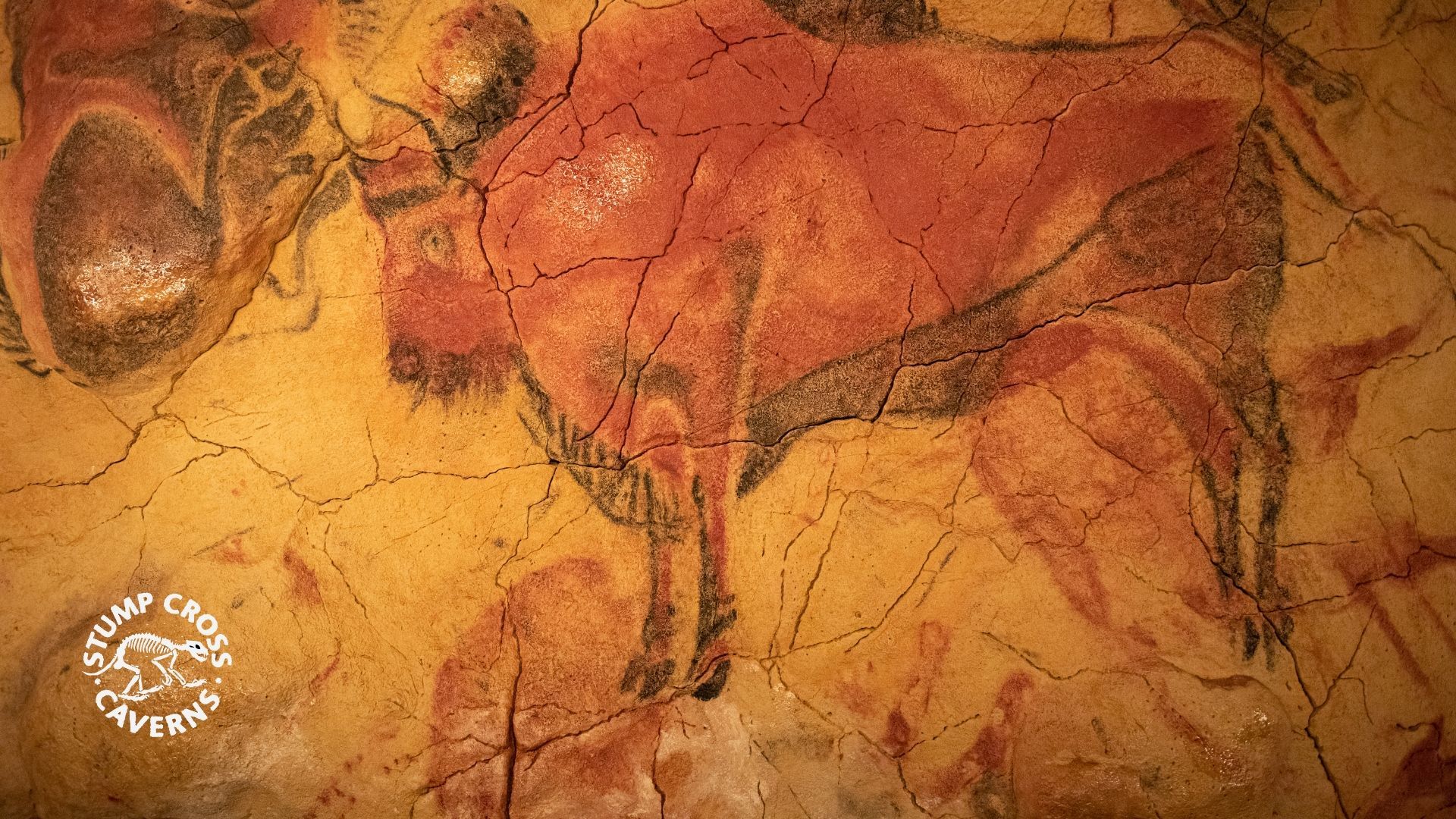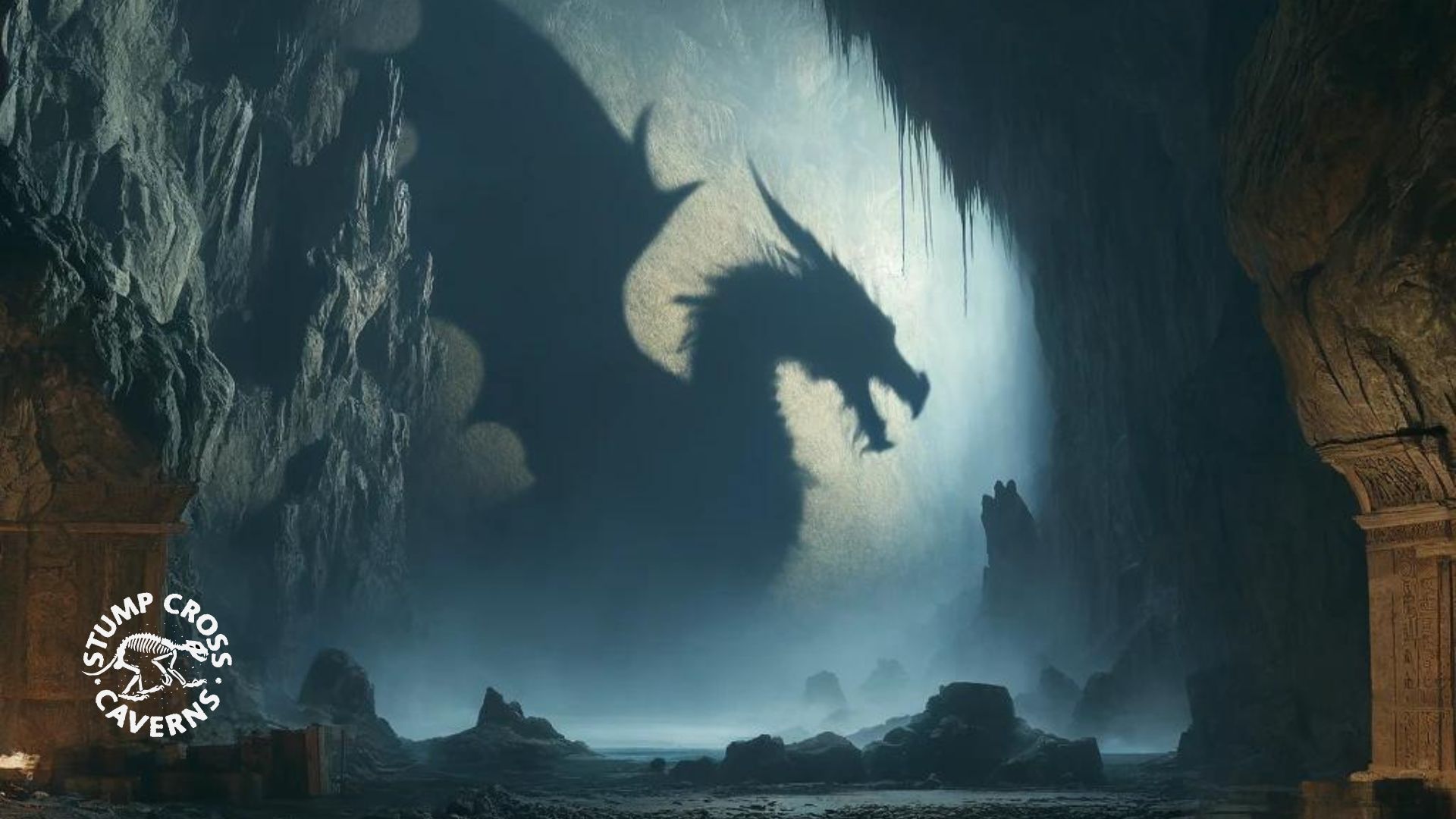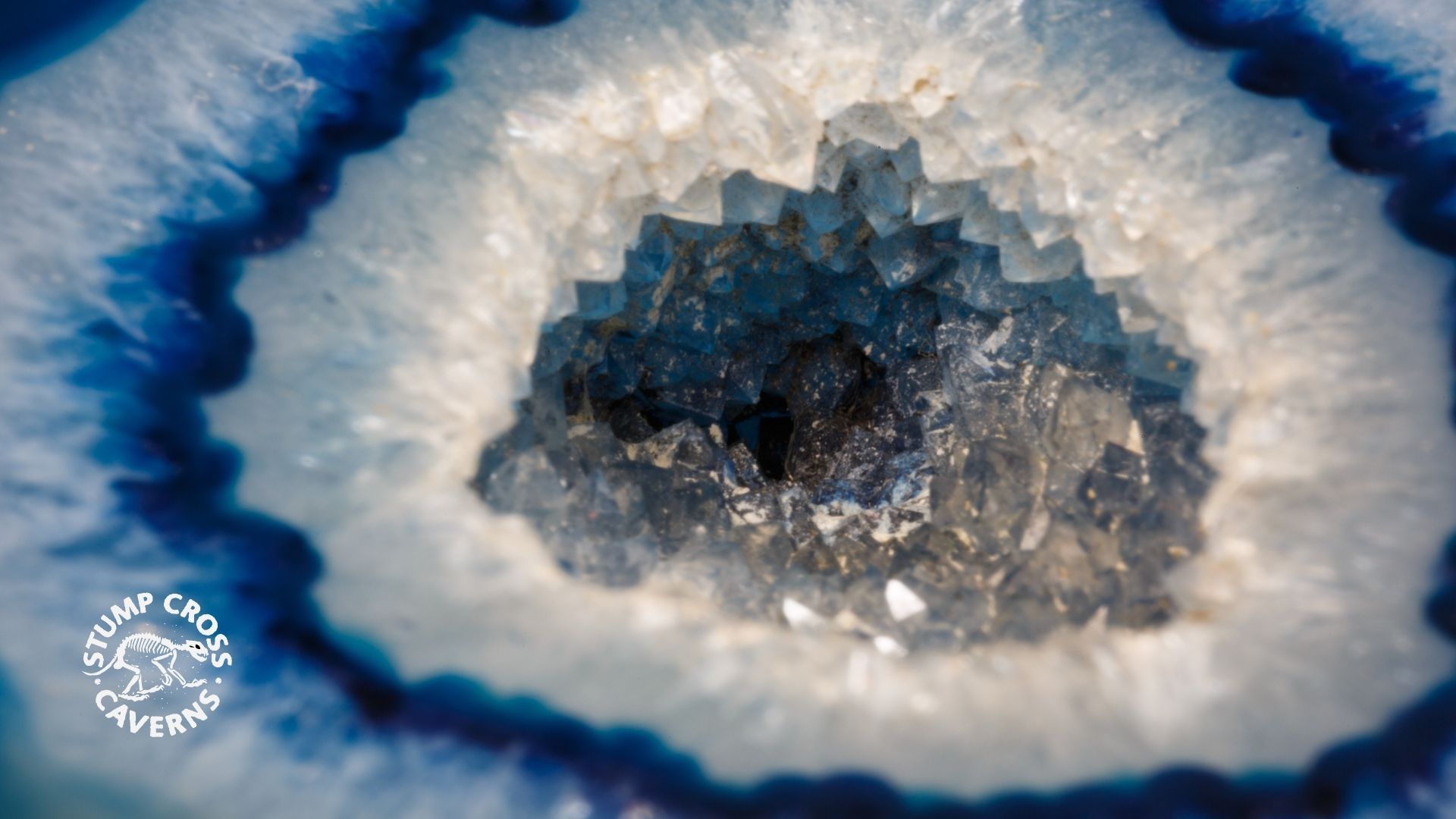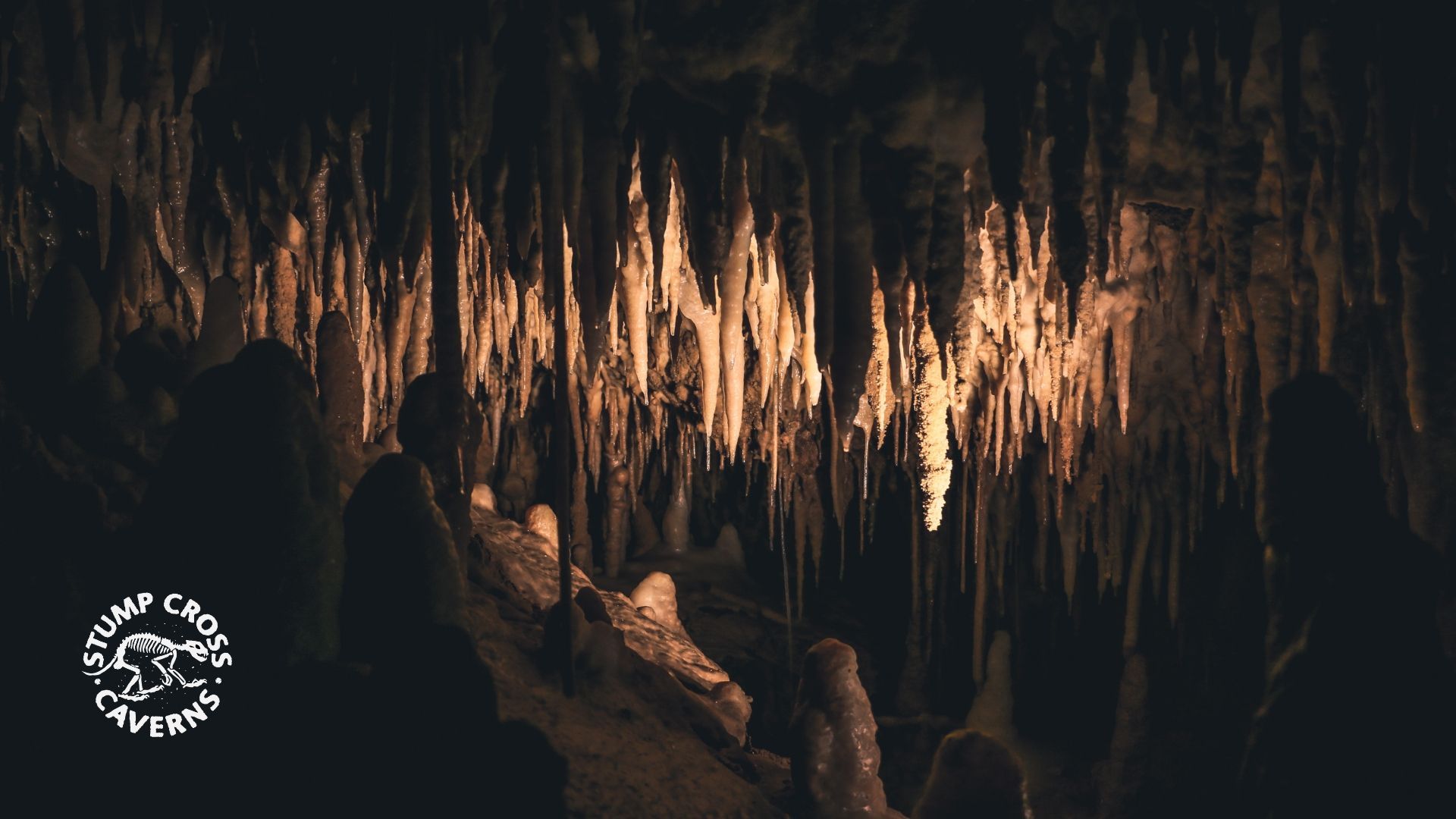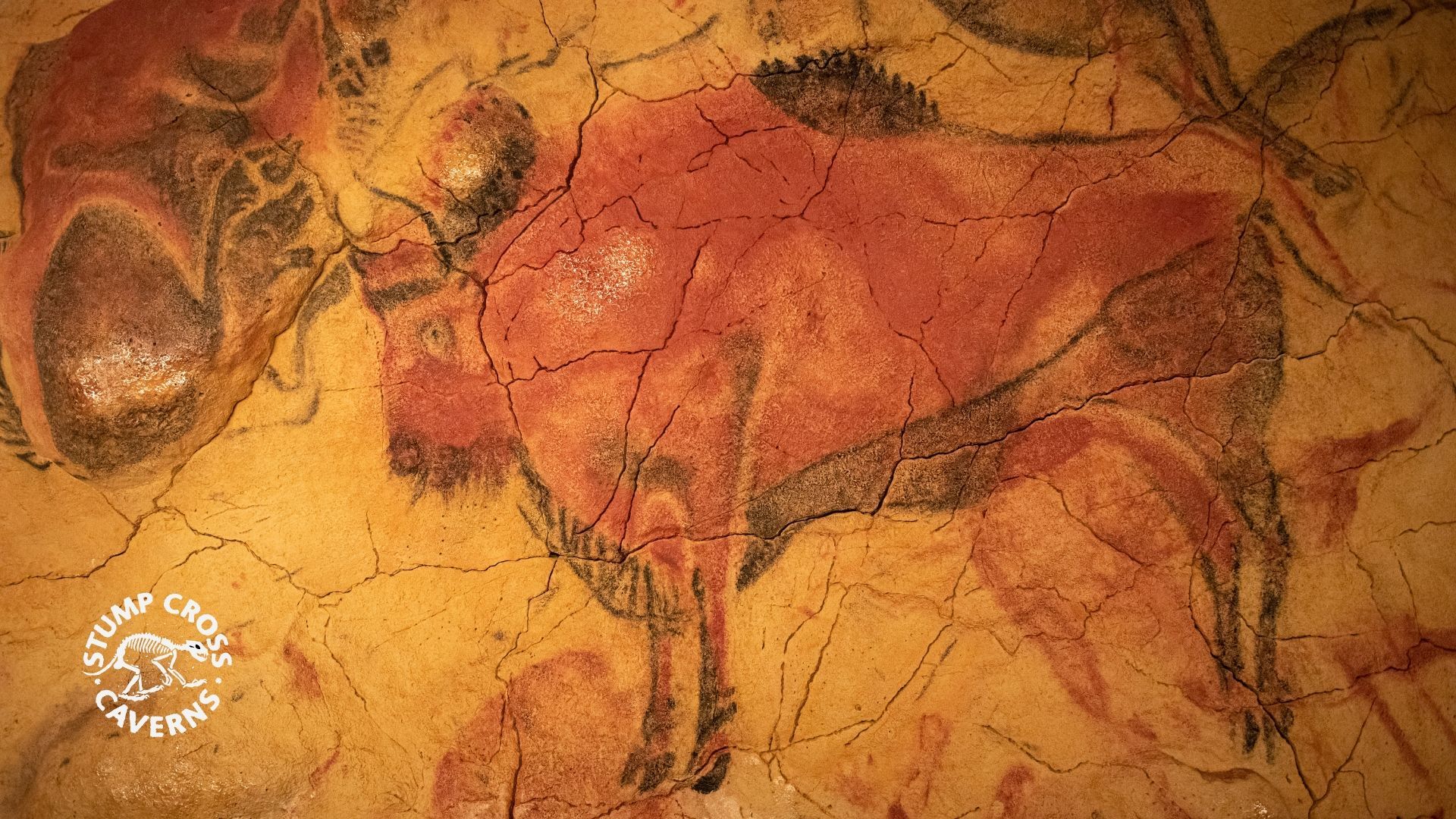At Stump Cross Caverns, the rocks glow under UV light. But why? Learn all about it in our explainer article.
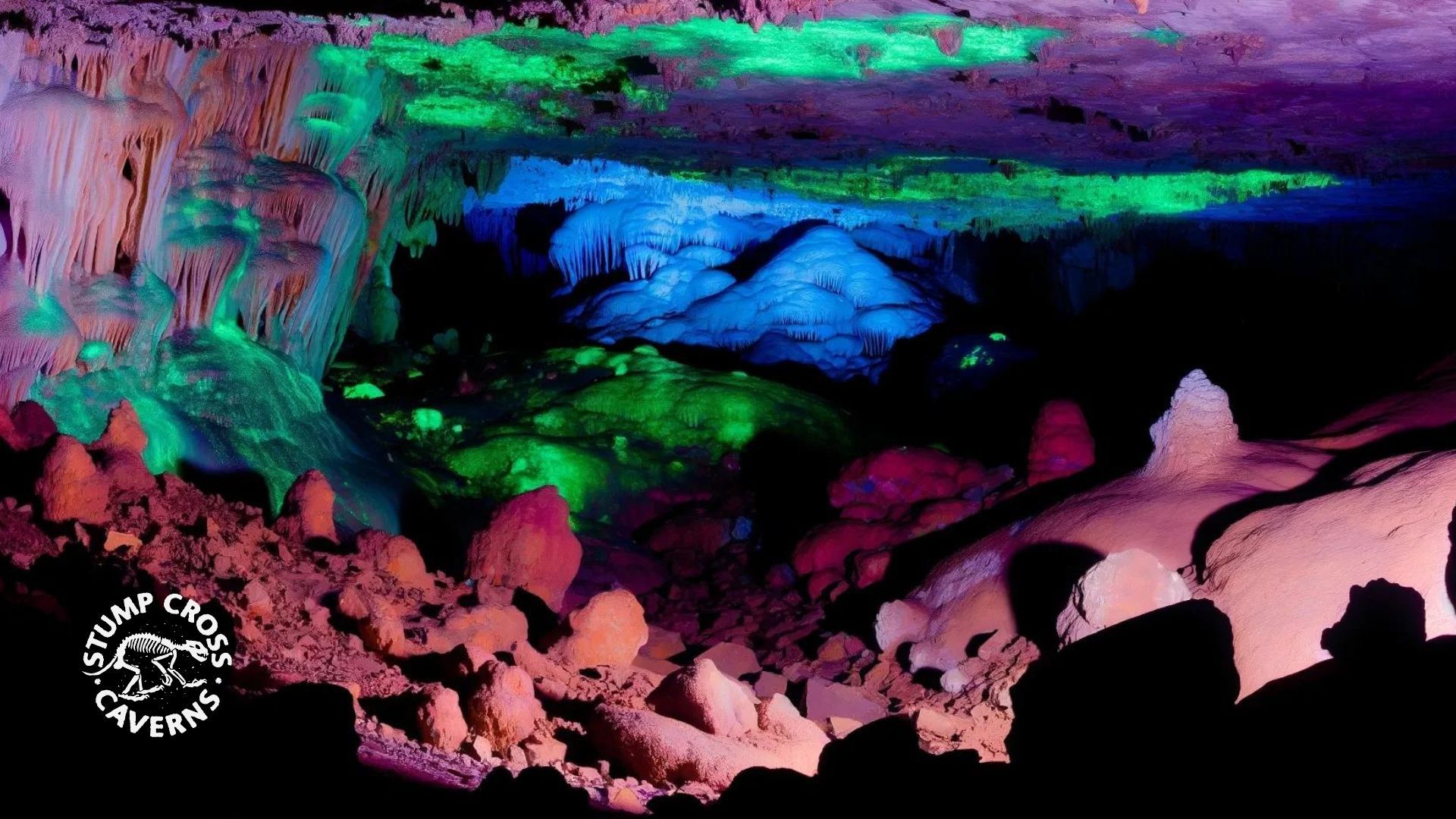
Ever wanted to see a cave glow in the dark? At Stump Cross Caverns, you can.
With your ultraviolet (UV) torch in hand, you can see the natural calcite in the rocks light up with a mysterious glow.
The effect is breathtaking. Like an X-ray, the torch uncovers hidden veins and details in the rock that the eye alone can't see.
Don't get us wrong – you don't need a UV torch to experience the magic of Stump Cross. But it adds an extra layer of mystery that visitors love.
But why do the rocks light up like this? It's time for a quick science lesson.
What is fluorescence?
Stump Cross Caverns is a network of limestone caves that's bursting with stalagmites, stalactites and other rock formations. These are formed when rainwater seeps through the soil and leaves calcite traces in the rock.
Over thousands of years, these calcite deposits can become rock formations. This means the walls of Stump Cross are imbued with calcite crystals.
Calcite is fluorescent. That doesn't mean that it's brightly coloured like a fluorescent marker or a fluorescent T-shirt. It means that it produces light by a process called fluorescence.
When you shine your UV torch on the walls and formations of Stump Cross, you're watching an atomic reaction take place.
The atoms inside a fluorescent mineral like calcite are orbited by electrons. This orbit is regular and steady until it's struck by UV light. This ray of light puts the electrons in a spin.
When the electrons calm down after this disruption, the energy they've absorbed from the UV light is transformed into a new photon. This new photon is longer than the energy it comes from – and this is perceived by the human eye as fluorescence.
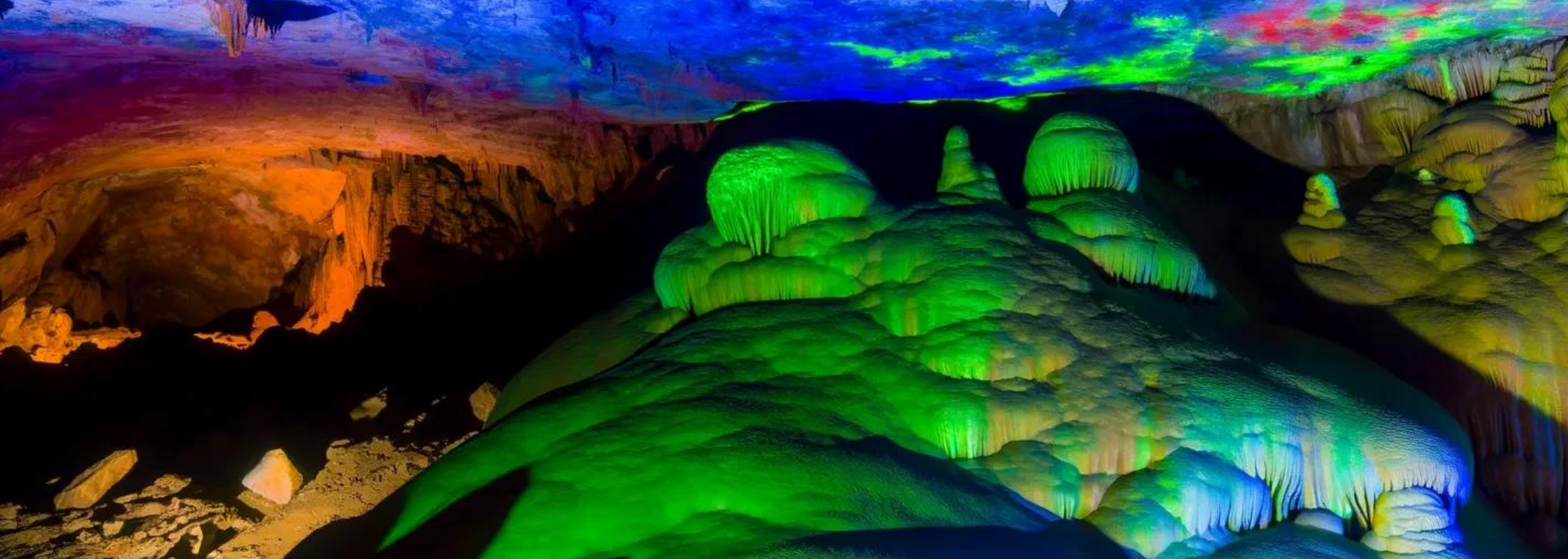
When the cavern walls glow under UV light, you're literally exciting the atoms inside them and producing new photons. It feels like a magic trick – but in fact, it's a scientific phenomenon that's been known about for centuries.
A brief history of fluorescence
The earliest known record of fluorescence comes from the 16th century and a type of wood called
lignum nephriticum.
When it came into contact with water, it turned a brilliant blue.
Craftsmen would make cups from this wood that would be presented as gifts to royalty. It was also used as a medicine.
The fluorescent properties of minerals, however, weren't uncovered until the 19th century. Different scientists observed it in fluorites, chlorophyll and quinine.
In 1852, the Irish scientist George Gabriel Stokes discovered that fluorspar and uranium glass had the same property. He wrote:
"I am almost inclined to coin a word, and call the appearance fluorescence, from fluor-spar, as the analogous term opalescence is derived from the name of a mineral [(opal)]".
What other rocks are fluorescent?
There are more than 500 minerals known to us that show fluorescence under UV light. However, not all specimens glow every time.
To glow under UV light, minerals need an ion actuator (or ion activator). Different actuators produce different colours.
Willemite, for example, will glow green, whereas calcite can fluoresce many colours – red, blue, white, pink, green and orange.
Other fluorescent minerals include scheelite, langbanite and apophyllite.
Multiple minerals can be found in a single rock. Some rocks can have up to half a dozen minerals, each of which will fluoresce differently. These multi-mineral specimens are much prized by collectors.
Sterling Hill: fluorescent capital of the world
In Ogdensburg, New Jersey, there's a disused zinc mine called Sterling Hill. It's world-famous for its huge range of fluorescent minerals.
Today, there's a Museum of Fluorescence located in four rooms of the old mill building. Visitors can gawp at the Color Wall: a floor-to-ceiling display of around 100 fluorescent minerals.
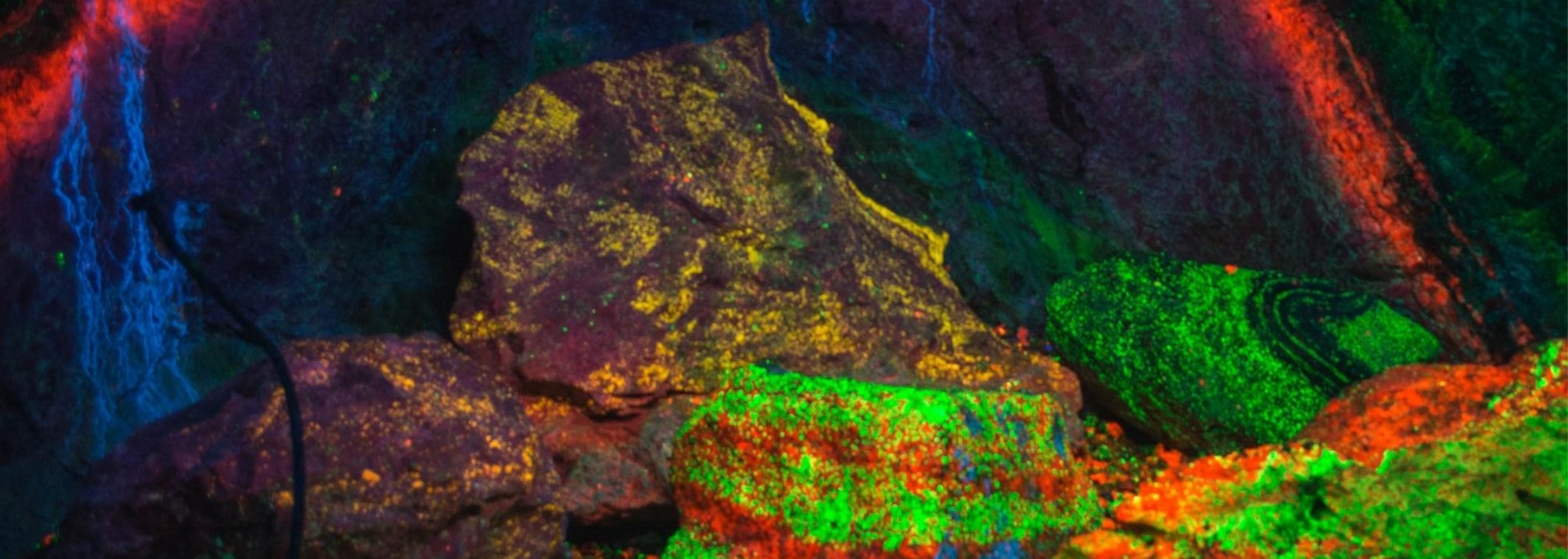
The wall is 16 feet wide and contains specimens that can be two to three feet long. Visitors are treated to a lighting display, seeing the wall under longwave and shortwave UV light separately and together. The lights are then switched off and the room is dark save for the mineral's ghostly afterglow.
It's a haven for fluorescent fans and mineral collectors as well as curious non-specialists.
What's the difference between fluorescence, phosphorescence and luminescence?
Fluorescence and phosphorescence are both types of luminescence.
In both cases, the substance absorbs UV light, its atoms get shaken up and a longer wavelength of light is produced. This wavelength is then perceived as a glow.
The difference is simple: if the emission disappears immediately, it's fluorescence. But if it lingers, it's phosphorescence.
Calcite can exhibit both fluorescence and phosphorescence. Often, the fluorescence has a different hue to the phosphorescent afterglow.
When you shine a light on the calcite in Stump Cross Caverns, it glows in the dark. Then, when the torch goes off, it leaves a brief trail behind. This makes our calcite both fluorescent and phosphorescent.
How does the UV tour work?
At Stump Cross, we have two main types of cave experience.
In the mornings and early afternoons, the caves are discreetly lit. You get to see the caves in all their ancient, photogenic glory.
Then at 3 PM, the lights go out and we begin handing out ultraviolet torches.
When you book for the UV Experience, you get to enjoy a fluorescent, glow-in-the-dark, subterranean world.
First, we give you a torch that shines an ultraviolet light.
Now it's time for your descent into the underworld down 65 steps. Once you're down there, shine your torch on the walls and see them in a whole new light. Under the UV light, you can pick out gorgeous veins and details that are otherwise invisible.
It's a mysterious, enchanting experience that you won't forget in a hurry. So, what are you waiting for? If you want to explore a real
glow-in-the-dark cave, book for the
Stump Cross Caverns UV Experience today.

Stump Cross Caverns
Greenhow Hill
Pateley Bridge
Yorkshire
HG3 5JL
All Rights Reserved | Stump Cross Limited
Crafted with creativity and marketing savvy by My Digital Hero

Stump Cross Caverns
Greenhow Hill
Pateley Bridge
Yorkshire
HG3 5JL
enquiries@stumpcrosscaverns.co.uk
enquiries@stumpcrosscaverns.co.uk
All Rights Reserved | Stump Cross Limited
